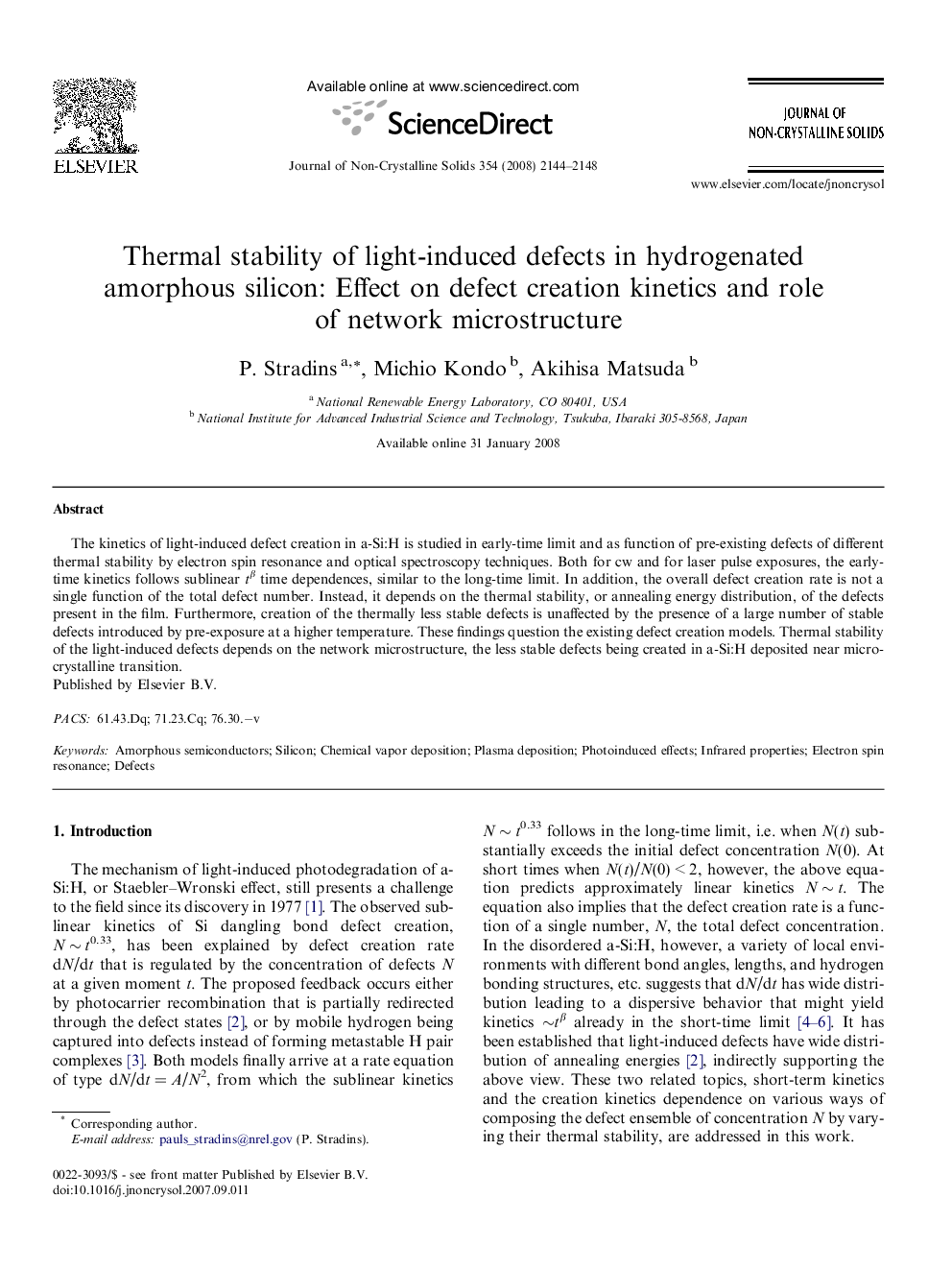| Article ID | Journal | Published Year | Pages | File Type |
|---|---|---|---|---|
| 1484655 | Journal of Non-Crystalline Solids | 2008 | 5 Pages |
Abstract
The kinetics of light-induced defect creation in a-Si:H is studied in early-time limit and as function of pre-existing defects of different thermal stability by electron spin resonance and optical spectroscopy techniques. Both for cw and for laser pulse exposures, the early-time kinetics follows sublinear tβ time dependences, similar to the long-time limit. In addition, the overall defect creation rate is not a single function of the total defect number. Instead, it depends on the thermal stability, or annealing energy distribution, of the defects present in the film. Furthermore, creation of the thermally less stable defects is unaffected by the presence of a large number of stable defects introduced by pre-exposure at a higher temperature. These findings question the existing defect creation models. Thermal stability of the light-induced defects depends on the network microstructure, the less stable defects being created in a-Si:H deposited near microcrystalline transition.
Keywords
Related Topics
Physical Sciences and Engineering
Materials Science
Ceramics and Composites
Authors
P. Stradins, Michio Kondo, Akihisa Matsuda,
